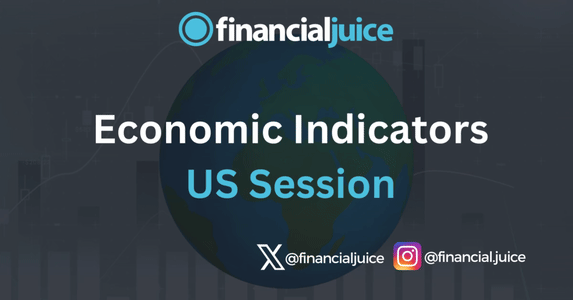
Week Ahead: Economic Indicators (US)
Hey, Traders!
For the April 8th week, here is a list of all of the major economic indicators being released during the US Session, with a brief synopsis of what they represent and what to possibly expect from the markets in reaction.
Wednesday 10th April
08:30 ET
US CPI for March
The US Consumer Price Index gauges the average change in prices paid by consumers for a basket of goods and services over time.
Calculated monthly by the US Bureau of Labor Statistics, the CPI reflects fluctuations in the cost of items such as food, housing, healthcare, and transportation.
Presented as a percentage change relative to a predetermined base period, the CPI serves as a measure of inflation.
What to Expect
If inflation comes in hotter (higher) than expected, you will most likely see dollar strength and US stocks weaken, as this signals that the Fed’s fight with inflation is going to require a more hawkish stance, with the potential for a higher for longer US interest rate.
09:45 ET
BoC Rate Decision
The Bank of Canada Interest Rate Decision is the main monetary policy tool where the Bank of Canada’s Governing Council determines the official interest rate for the Canadian economy.
This rate, known as the overnight rate, influences short-term interest rates and serves as a key benchmark for borrowing costs in the country.
The Bank of Canada uses this rate to achieve its inflation target and support overall economic goals.
Changes in the interest rate can impact consumer spending, business investments, and inflation.
What to Expect
It is widely expected that the BoC will leave rates unchanged at 5%.
If realized, attention will turn to the subsequent BoC rate statement for any clues on the future path of BoC interest rates.
Any mention of more rate cuts this year than are already priced in by the markets could prompt strength in Canadian stocks and weakness in the Canadian dollar.
However, hawkish remarks implying fewer interest rate cuts than are currently priced this year could result in the opposite.
10:30 ET
Weekly EIA Crude Oil Inventories
The US Weekly Crude Oil Inventories report provides information on the nation’s stockpile of crude oil, indicating changes in inventory levels over the previous week. Published by the US Energy Information Administration, this report is crucial for understanding supply and demand dynamics in the oil market. Fluctuations in crude oil inventories can influence oil prices and offer insights into market trends.
What to Expect
An increase in inventories may suggest oversupply or weaker demand, while a decrease may indicate stronger demand or disruptions in supply.
Thursday 11th April
08:30 ET
US PPI for March
The US Producer Price Index measures the average change over time in the selling prices received by domestic producers for their output.
It is an economic indicator that reflects the direction of inflationary pressures at the producer level.
PPI is used to assess inflation trends in the early stages of the production process, providing insights into potential changes in consumer prices, making it a leading indicator.
What to Expect
Higher-than-expected producer prices can point to the potential for these price increases on the supply side to be passed down to the consumer side and become reflected in CPI, which would be a headwind for the Fed’s goal of returning inflation to target.
This would be likely to cause weakness in US stocks and strength in the dollar, as traders would likely push back bets on when the Fed would start cutting interest rates this year.
US Weekly Initial Jobless Claims
The US Initial Jobless Claims report provides data on the number of individuals who filed for unemployment benefits for the first time during the previous week.
It serves as an indicator of the labor market’s health, with higher numbers indicating increased layoffs and economic instability, while lower numbers suggest a stronger job market.
Continued Jobless Claims, on the other hand, represent the number of individuals who remain on unemployment benefits after their initial claim.
What to Expect
Employment is one of the Fed’s mandates; yet, FOMC officials have stated that they consider a higher unemployment rate as consistent with their goal of returning to 2% inflation. This means that greater-than-expected jobless claims, implying higher unemployment, are likely to be interpreted by the Fed as good news for inflation’s return to target. This scenario might force US stocks to rise and the currency to fall.
Friday 12th April
University of Michigan Sentiment April Prelim
The University of Michigan Consumer Sentiment Index is an economic indicator that measures the confidence and optimism of US consumers regarding the economy.
Published by the University of Michigan, this preliminary index is based on surveys that assess consumer attitudes toward current economic conditions and expectations for the future.
It provides an early snapshot of consumer sentiment before the final monthly release. A higher sentiment reading indicates increased confidence, potentially influencing consumer spending—an essential component of economic activity.
What to Expect
Policymakers, analysts, and businesses monitor this indicator for insights into consumer behavior and economic trends. A higher consumer sentiment could cause an upside risk to inflation, on the other hand, it also indicates that the consumer is doing well in the face of high interest rates, reducing the risks of a recession




